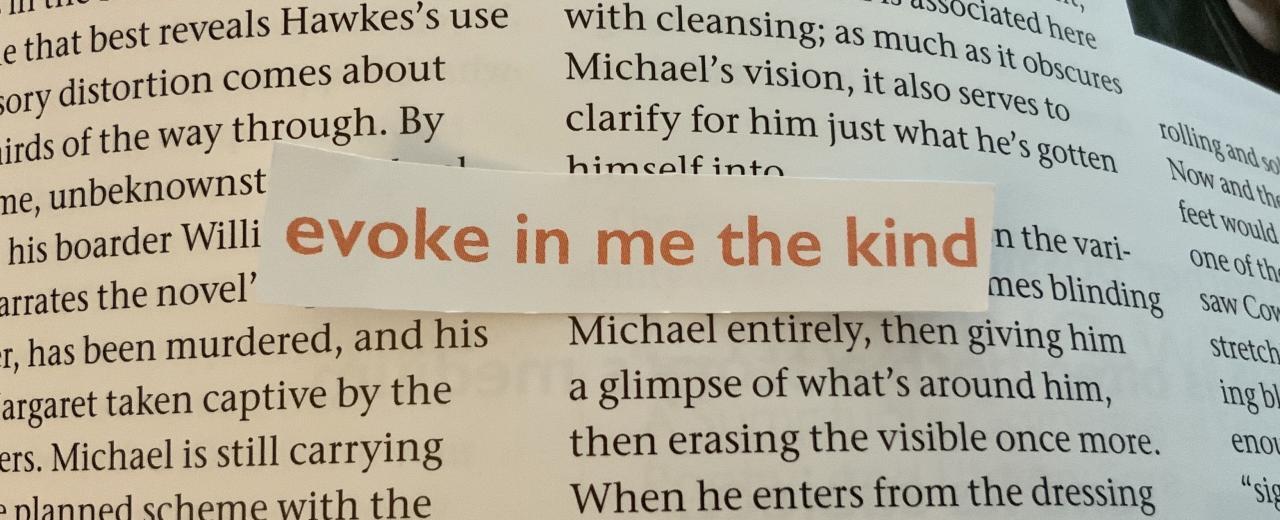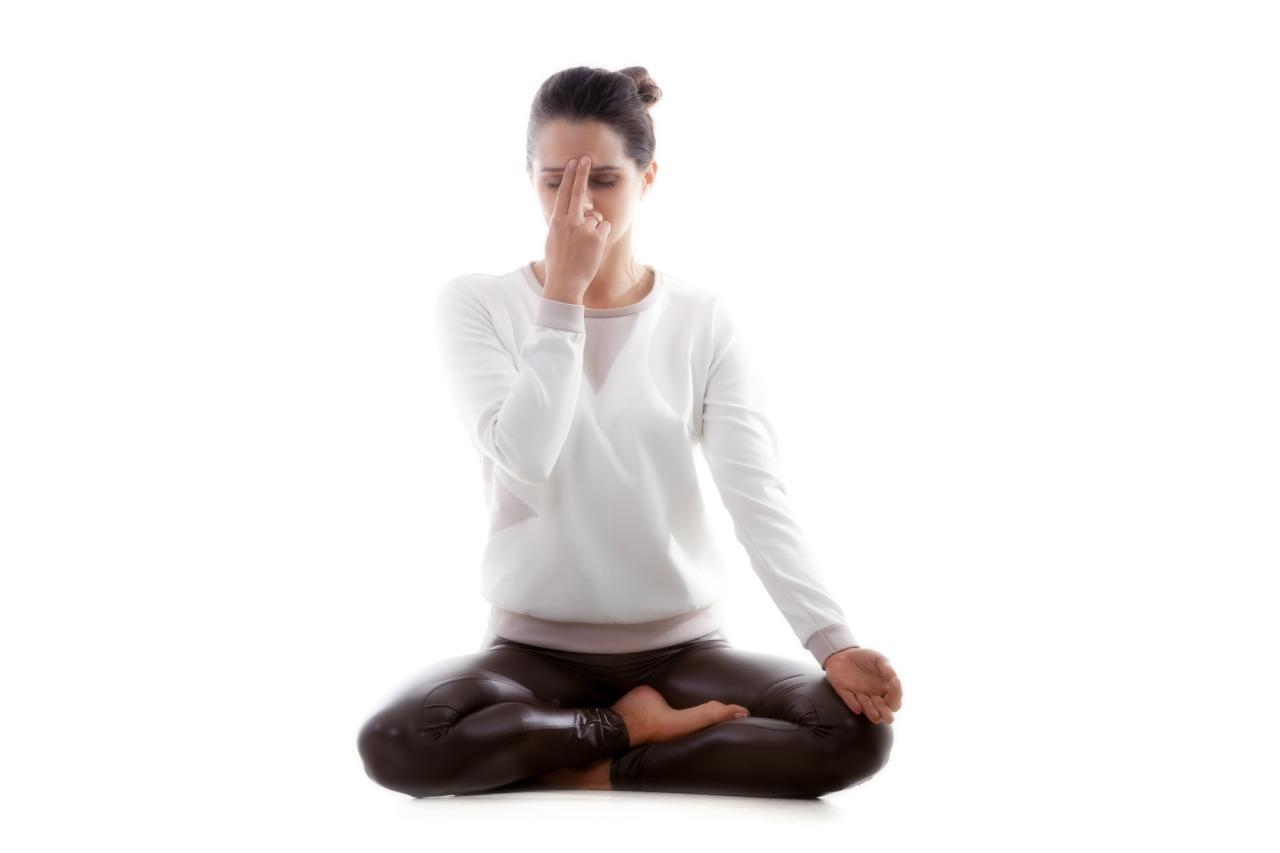Unlock the transformative power of breath with our comprehensive guide on How to Breathe Correctly for Deep Meditation. This exploration delves into the fundamental mechanics of respiration, equipping you with the knowledge and techniques to enhance your meditative practice. From understanding the intricate interplay of your diaphragm and lungs to mastering various breathing exercises, we’ll equip you with the tools for a deeper connection with yourself and a more profound meditative experience.
Discover how proper breathing can profoundly influence your meditative journey. By exploring the nuances of different breathing techniques and postures, you’ll gain a deeper understanding of the body-mind connection, and develop strategies to overcome potential obstacles in your practice. This guide offers practical insights and exercises to cultivate a mindful relationship with your breath, ultimately supporting a more enriching meditative experience.
Understanding the Fundamentals of Breathing

Breathing is a fundamental process essential for life, yet often overlooked. A deeper understanding of the mechanics of breathing, particularly diaphragmatic breathing, is crucial for enhancing meditative practices and overall well-being. This section will explore the intricate relationship between breathing and the body, examining how different types of breathing affect our physical and mental states.
Normal Human Breathing Mechanics
Normal human respiration is a complex interplay of muscular and anatomical structures. Air moves into and out of the lungs due to pressure changes within the thoracic cavity. The diaphragm, a dome-shaped muscle located below the lungs, plays a pivotal role. When the diaphragm contracts, it flattens, increasing the volume of the thoracic cavity. This expansion creates a lower pressure inside the lungs than the surrounding atmosphere, drawing air inward.
Conversely, when the diaphragm relaxes, it returns to its dome shape, decreasing the volume of the thoracic cavity and increasing the pressure inside the lungs, forcing air outward. The intercostal muscles, located between the ribs, also assist in breathing. These muscles contract and relax, expanding and compressing the rib cage, further altering the volume of the thoracic cavity and facilitating the movement of air.
The lungs themselves are passive structures that passively expand and contract in response to changes in pressure.
Shallow vs. Deep Breathing
Shallow breathing involves minimal expansion of the rib cage and limited diaphragm movement. This type of breathing often occurs unconsciously, particularly during stress or anxiety. Shallow breathing can restrict the amount of oxygen entering the bloodstream, leading to feelings of lightheadedness, fatigue, and reduced mental clarity. Deep breathing, on the other hand, involves a fuller expansion of the rib cage and a more pronounced contraction and relaxation of the diaphragm.
This type of breathing promotes efficient oxygen uptake, reducing feelings of stress and anxiety, and enhancing relaxation and focus. Deep breathing is essential for effectively managing stress responses and maintaining overall well-being.
Diaphragmatic Breathing in Meditation
Diaphragmatic breathing, also known as abdominal breathing, is particularly beneficial in meditation. It involves the conscious use of the diaphragm to draw air deep into the lungs. By focusing on the expansion and contraction of the abdomen during inhalation and exhalation, practitioners can cultivate a sense of calm and focus, which are essential for a successful meditative practice.
This mindful approach to breathing promotes a sense of groundedness and reduces the distractions that can hinder meditative absorption.
Breathing Exercises for Meditation
Various breathing techniques are used in meditation to enhance focus and relaxation. One example is alternate nostril breathing (Nadi Shodhana). This practice involves strategically blocking and releasing each nostril during inhalation and exhalation, promoting balance and harmony within the body. This balanced breathing, along with other techniques, can help regulate the nervous system, reduce stress, and foster a sense of inner peace.
Key Anatomical Structures in Respiration
| Structure | Function |
|---|---|
| Diaphragm | Primary muscle responsible for inhalation and exhalation, by contracting and relaxing to change the volume of the thoracic cavity. |
| Intercostal Muscles | Assist in expanding and compressing the rib cage, aiding in the process of breathing. |
| Lungs | Passive structures that expand and contract in response to changes in pressure within the thoracic cavity, facilitating gas exchange. |
| Trachea | The windpipe, carrying air from the nose and mouth to the lungs. |
| Bronchi | The two branches of the trachea that lead to the lungs. |
| Bronchioles | Smaller branches of the bronchi that further subdivide into the alveoli. |
| Alveoli | Tiny air sacs in the lungs where gas exchange occurs. |
Preparing for Deep Meditation Breathing

Embarking on a journey of deep meditation requires meticulous preparation, extending beyond simply finding a quiet space. Careful consideration of physical posture, mental state, and environmental factors significantly enhances the meditative experience and promotes effective breathing techniques. This section provides a structured approach to preparing for deep breathing practices, emphasizing the importance of both physical and mental readiness.Effective meditation involves a harmonious blend of body and mind.
Preparing the body for deep breathing in meditation creates a conducive environment for the mind to quiet and focus. This meticulous preparation lays the foundation for a more profound and fulfilling meditative experience.
Establishing a Comfortable Posture
A suitable posture is paramount for optimal breathing during meditation. A rigid or strained posture can impede the natural flow of breath, hindering the meditative process. Maintaining a balanced and comfortable posture allows the body to relax and release tension, facilitating the deep and rhythmic breathing crucial for meditation. Proper posture supports the natural alignment of the spine, promoting a sense of groundedness and stability.
This, in turn, allows the diaphragm to move freely, facilitating efficient inhalation and exhalation.
- Find a supportive surface: A cushion or a chair can be used to maintain a stable and comfortable posture. The surface should provide adequate support for the back and allow for a relaxed yet upright posture.
- Maintain an upright spine: Avoid slouching or hunching, as this can restrict the movement of the diaphragm and rib cage. Maintain a slight arch in the lower back to encourage natural breathing.
- Relax the shoulders and neck: Tension in these areas can restrict breathing. Ensure the shoulders are relaxed and away from the ears. The neck should be aligned with the spine, without any strain.
- Place hands comfortably: Hands can be placed on the knees, lap, or in a mudra position, depending on preference. The important consideration is that the hands are positioned comfortably without any strain.
Creating a Calm and Quiet Environment
A tranquil and quiet environment is essential for deep meditation. External distractions can significantly disrupt the focus required for deep breathing practices. Minimizing sensory input allows the mind to settle into a state of calm and awareness. This controlled environment fosters a sense of peace and serenity, which in turn facilitates the meditative process.
- Minimize external noise: Identify and eliminate potential sources of noise, such as loud music, conversations, or traffic. Consider using earplugs or white noise to block out unwanted sounds.
- Dim the lights: Reducing the intensity of light can create a more calming atmosphere. Soft, ambient lighting can enhance the sense of tranquility.
- Choose a comfortable temperature: Maintain a moderate temperature in the meditation space to prevent feelings of discomfort or distraction.
- Declutter the space: A clean and organized environment can contribute to a sense of calm and focus.
Addressing Potential Barriers
Physical and emotional factors can impede deep breathing practices. Understanding these barriers is crucial for overcoming them and fostering a more conducive environment for meditation. Addressing physical discomfort and emotional distress is essential for effective meditation. Developing coping strategies is key to maintaining focus and progress.
- Physical discomfort: Muscle tension, stiffness, or pain in the body can interfere with deep breathing. Gentle stretching and body scans can help alleviate physical discomfort. A supportive posture and mindful awareness of the body can minimize such issues.
- Emotional distress: Anxiety, stress, or sadness can disrupt the focus and attention needed for meditation. Practicing mindfulness techniques, such as grounding exercises, can help manage emotional distress. Developing emotional regulation skills is vital for sustained practice.
Meditation Postures and Their Effects on Breathing
Different meditation postures can affect breathing in various ways. Choosing a posture that aligns with individual needs and preferences is important for maximizing the benefits of meditation.
| Meditation Posture | Effect on Breathing |
|---|---|
| Seated Meditation | Promotes a stable and balanced posture, allowing for a free flow of breath. The upright spine facilitates diaphragm movement, enabling efficient breathing. |
| Lying Down Meditation | Can be beneficial for those with physical limitations. The relaxed posture can promote deep, restorative breathing, but may lead to drowsiness in some individuals. |
| Standing Meditation | Requires greater focus and awareness. Can strengthen balance and promote alertness, potentially leading to a more focused and stable breathing pattern. |
Techniques for Correct Breathing in Meditation
Mastering the art of controlled breathing is fundamental to a fulfilling meditation practice. Proper breathing techniques facilitate a deeper connection with the present moment, calming the mind and fostering a sense of inner peace. This section delves into various methods for achieving deep, controlled breathing during meditation, highlighting specific exercises and their benefits.Understanding the subtle interplay between breath and mind is crucial.
Breathing acts as a powerful anchor, grounding us in the present and allowing us to observe our thoughts without judgment. This mindful approach, when integrated into daily life, becomes a valuable tool for managing stress and cultivating a more mindful existence.
Mindful Deep Breathing Techniques
Various techniques exist for achieving deep and controlled breathing during meditation. Each method offers unique benefits and can be tailored to individual needs. Understanding these techniques allows for a more profound and personalized meditation experience.
- Diaphragmatic Breathing: This technique focuses on engaging the diaphragm, the primary muscle for respiration. By consciously expanding the abdomen during inhalation and contracting it during exhalation, practitioners can achieve a more complete and controlled breath. This approach is often associated with a feeling of calmness and relaxation, as it promotes a more efficient oxygen exchange.
- Alternate Nostril Breathing (Nadi Shodhana): This ancient yogic practice involves alternately breathing through each nostril, typically using the thumb and ring finger to block the nostrils. This rhythmic alternation is believed to balance the energies within the body, promoting a sense of calm and focus. Regular practice can lead to improved concentration and emotional regulation.
- Ujjayi Breath: Also known as the victorious breath, this technique involves exhaling through the nose while constricting the throat muscles. This creates a soft, gentle “ocean-like” sound. Ujjayi breath enhances focus, calms the nervous system, and allows for a deeper sense of presence.
Mindful Breathing Exercises
Mindful breathing exercises are designed to cultivate awareness and focus. They encourage a deeper connection with the present moment, allowing practitioners to observe their breath without judgment.
- Counting Breaths: This exercise involves counting each inhalation and exhalation, typically from one to ten. The act of counting anchors the mind, preventing it from wandering. This simple exercise helps develop focus and awareness.
- Body Scan Breathing: This exercise involves focusing on the sensations of the breath as it moves through the body. Practitioners follow the breath as it enters the nostrils, travels down the body, and leaves. This mindful awareness cultivates a deeper connection with the physical self, reducing stress and promoting relaxation.
Breathing Ratios and Their Benefits
The ratio of inhalation to exhalation can significantly influence the effects of meditation. Different ratios can evoke distinct states of mind.
| Breathing Ratio | Potential Benefits |
|---|---|
| 1:1 (equal inhalation and exhalation) | Promotes balance and equilibrium, ideal for calming the mind and reducing anxiety. |
| 2:1 (double exhalation) | Can increase energy levels, enhance focus, and promote a sense of alertness. |
| 1:2 (double inhalation) | May enhance relaxation, reduce stress, and cultivate a sense of deep calm. |
Integrating Breath Awareness into Daily Activities
Integrating breath awareness into daily activities serves as an excellent preparation for meditation. This practice allows for the cultivation of mindfulness in everyday life, which directly translates to a more profound meditation experience.
- Mindful Walking: Paying close attention to the sensations of each step, the rise and fall of the breath, and the movement of the body can cultivate a sense of groundedness and presence.
- Mindful Eating: Focusing on the textures, tastes, and aromas of food, while observing the breath, enhances appreciation for the present moment and promotes a mindful relationship with food.
- Mindful Movement: Integrating breath awareness into any physical activity, whether it’s stretching, yoga, or even cleaning, brings greater awareness to the body and mind.
Breath Awareness and Anchoring the Mind
Breath awareness plays a critical role in anchoring the mind. By focusing on the breath, practitioners create a stable point of reference, allowing them to observe thoughts and emotions without getting swept away. This awareness fosters a sense of calm and detachment, enabling a deeper connection with the present moment.
Integrating Breathing with Meditation Practices
Deep breathing, when effectively integrated into meditation practices, significantly enhances the meditative experience. It serves as a powerful tool to cultivate focus, manage distractions, and deepen self-awareness. By consciously engaging with the breath, practitioners can navigate the complexities of the mind and emotions more effectively, leading to a more profound and enriching meditation journey.Effective integration of deep breathing techniques into various meditation styles fosters a deeper connection with the present moment.
This mindful engagement with the breath acts as an anchor, helping to stabilize the mind and redirect attention away from distracting thoughts or emotions.
Integrating Deep Breathing into Different Meditation Styles
Different meditation styles, each with its unique focus and approach, can be profoundly enhanced by incorporating deep breathing techniques. The deliberate regulation of breath becomes a key element in cultivating the desired state of mind.
- Mindfulness Meditation: Mindfulness meditation emphasizes present-moment awareness. Deep breathing acts as a powerful anchor, drawing attention back to the breath whenever the mind wanders. By observing the sensation of each inhale and exhale, practitioners cultivate a deeper understanding of their thoughts and emotions without judgment. This continuous return to the breath cultivates a sense of calm and clarity, essential to mindfulness practice.
- Loving-Kindness Meditation: Loving-Kindness meditation focuses on cultivating feelings of compassion and goodwill towards oneself and others. Deep breathing can amplify this practice by promoting a sense of inner peace and tranquility. The gentle rhythm of the breath can be used to ground the practitioner and enhance the feelings of love and kindness. The focus on the breath can quiet the mind, allowing space for the compassionate emotions to flourish.
- Transcendental Meditation (TM): TM involves the use of a specific mantra. Deep breathing, often coupled with the mantra, is a crucial component of this technique. The breath, combined with the mantra, helps to create a state of deep relaxation and quietude, conducive to achieving a profound meditative state. The breath is often used as a guide, bringing the practitioner back to the meditative state when their attention wanders.
Breathing as an Anchor for Focus
In meditation, the mind can often be easily distracted by a multitude of thoughts and sensations. Deep breathing provides a powerful anchor, enabling practitioners to redirect their attention back to the present moment. This process of repeatedly returning to the breath trains the mind to be more focused and less susceptible to distractions. By consciously anchoring to the breath, the mind becomes less reactive to external stimuli and more present in the meditative experience.
Using Breath Awareness to Observe Thoughts and Emotions
Deep breathing, combined with breath awareness, allows practitioners to observe their thoughts and emotions without judgment. The focus on the physical sensation of the breath provides a neutral ground from which to observe the mental and emotional landscape. By not engaging with thoughts or emotions, but instead observing them as they arise and pass, practitioners develop a greater sense of detachment and acceptance.
This non-judgmental observation fosters inner peace and allows for a deeper understanding of the nature of the mind.
Table of Meditation Styles and Deep Breathing Integration
| Meditation Style | How Deep Breathing is Incorporated |
|---|---|
| Mindfulness Meditation | Deep breathing is used as an anchor to redirect attention back to the present moment. |
| Loving-Kindness Meditation | Deep breathing promotes inner peace and enhances feelings of compassion. |
| Transcendental Meditation (TM) | Deep breathing is coupled with a mantra to achieve a state of deep relaxation. |
| Vipassana Meditation | Deep breathing is used to observe the sensations of the body and mind without judgment. |
| Zen Meditation | Deep breathing is crucial for maintaining posture and focus, and for observing the breath’s subtle nuances. |
Addressing Common Challenges and Considerations

Deep breathing techniques, while beneficial for meditation, can present various challenges. Understanding these hurdles and developing strategies to overcome them is crucial for sustained practice and reaping the full benefits. This section will address key considerations for navigating common obstacles and optimizing your meditative breathing journey.Consistent practice is paramount for integrating deep breathing into your meditation routine. Regularity allows the body and mind to adapt, fostering a deeper connection with the breath and enhancing the meditative experience.
Addressing potential discomfort, distractions, and individual needs will further empower your journey.
Consistency in Practice
Regularity in deep breathing practice is essential for realizing the full potential of meditation. Consistency fosters a deeper understanding of the breath’s subtle nuances, enabling a more profound meditative state. Establishing a routine and adhering to it, even for short periods, creates a positive feedback loop, encouraging continued practice. This regularity is key to cultivating the mental discipline needed for effective meditation.
Managing Discomfort and Physical Limitations
Physical limitations or discomfort during deep breathing exercises are common experiences. It is essential to approach these challenges with awareness and understanding. Adjusting the pace, duration, and type of breathing technique can mitigate discomfort. Modifications may involve reducing the intensity of the exercises, incorporating breaks, or switching to alternative breathing patterns. For example, if holding a breath for a prolonged duration causes strain, a reduced duration or pausing technique could be employed.
Patience and gentle modification are key.
Handling Distractions and Maintaining Focus
Distractions are inevitable during meditation. Mindfulness and a non-judgmental attitude are crucial for navigating these distractions. The key is to acknowledge the distraction without getting carried away by it. Returning to the breath with a gentle awareness helps re-establish focus. Practicing techniques for redirecting attention to the breath, such as counting breaths, can be effective.
Practicing mindfulness in everyday activities can also improve focus during meditation.
Adjusting Techniques to Individual Needs
Individual needs and preferences necessitate adjustments in breathing techniques. Not all techniques are suited for everyone. Some individuals might find certain breathing patterns more comfortable or effective than others. Experimentation with various techniques, like alternate nostril breathing, diaphragmatic breathing, or ujjayi breath, can help determine which resonates most effectively. Seeking guidance from a qualified instructor can further personalize the experience.
Benefits and Risks of Deep Breathing Techniques
Deep breathing techniques offer a range of benefits, including stress reduction, improved relaxation, and enhanced focus. However, potential risks are minimal and primarily associated with pre-existing respiratory conditions. If you have any underlying respiratory issues, it’s important to consult a healthcare professional before incorporating deep breathing exercises into your routine. Practicing under the guidance of a qualified instructor can also minimize potential risks.
Illustrative Examples and Visual Aids

Visual aids play a crucial role in understanding and internalizing the principles of correct breathing for deep meditation. These representations can transform abstract concepts into tangible, easily grasped ideas, fostering a deeper comprehension of the process. They are essential tools for learners to visualize and apply the techniques effectively.
Diaphragmatic Breathing Visualization
Understanding the diaphragm’s role in deep breathing is essential. A visual representation of the diaphragm’s movement during deep inhalation and exhalation can greatly aid comprehension. Imagine a flexible, dome-shaped muscle situated beneath the lungs. During inhalation, this muscle contracts and flattens, expanding the chest cavity. This action draws air into the lungs.
Conversely, during exhalation, the diaphragm relaxes, returning to its dome shape, and the chest cavity shrinks, expelling air. A diagram illustrating this movement, with clear labels for the diaphragm, lungs, and chest cavity, would effectively demonstrate the mechanics of deep breathing.
Mindful Breathing Exercise Visualization
A mindful breathing exercise can be visualized as a series of focused steps. Imagine a person seated comfortably, with their spine erect but not stiff. Their attention is gently drawn to the sensation of each breath, starting with the air entering the nostrils. They notice the gentle expansion of the chest and abdomen with each inhalation. The focus then shifts to the sensations of the air leaving the body during exhalation.
This continuous awareness of the breath’s rhythm creates a meditative state. A diagram or flowchart representing these steps, highlighting the focus and awareness at each stage, would further illustrate the process.
Respiratory System Anatomy Illustration
A detailed illustration of the respiratory system, highlighting key structures, is beneficial for comprehending the mechanics of breathing. This illustration should clearly depict the nasal cavity, pharynx, larynx, trachea, bronchi, and lungs. It should also show the relationship between these structures and their respective functions. The illustration should clearly label the key anatomical elements, enabling learners to visualize the pathways of air as it moves through the system.
Labeling the diaphragm, rib cage, and intercostal muscles is crucial to demonstrate the coordinated actions in breathing.
Shallow vs. Deep Breathing Comparison
A comparative visual representation of shallow and deep breathing is an effective way to illustrate the differences in their effects. The visual could use two figures: one exhibiting shallow breathing with minimal chest and abdominal expansion, and the other exhibiting deep breathing with significant chest and abdominal expansion. The accompanying text should highlight the increased oxygen intake and reduced stress levels associated with deep breathing compared to shallow breathing.
The comparison should visually demonstrate how the different breathing patterns affect the body.
Visualization of Breath in Meditation
Visualizing the breath entering and leaving the body during meditation can enhance the meditative experience. Imagine the breath as a gentle current flowing into and out of the body. This current can be visualized as a light, a wave, or a stream of energy. Visualizing the breath in a particular color, such as a soft blue or a gentle white, can further enhance the sense of calm and focus.
An illustration or a series of images depicting these visualizations could facilitate the practice. Consider the use of color and imagery to create a serene and focused visualization.
Closing Summary
In conclusion, this guide has illuminated the critical role of correct breathing in deepening your meditation practice. By understanding the fundamentals of respiration, preparing your body and mind, mastering various techniques, and integrating breathing into different meditation styles, you’ll be well-equipped to navigate the complexities of your meditative journey. Remember consistency and mindful adjustments are key to achieving lasting benefits.
May your journey be filled with profound insights and peace.